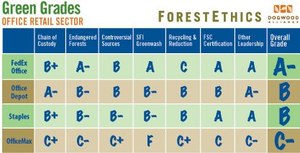PAK 2000 Fails to Meet Its Public Commitments
The commitments were made working closely with Rainforest Action Network (a member of Environmental Paper Network). In December 2009 RAN wrote to about 100 customers and potential customers of PAK 2000 informing them of the positive commitment and outlining the steps to be taken in the coming year. Unfortunately, after working over the past year to resolve the situation, RAN has been forced now to communicate once again with those same companies, this time to inform them that PAK 2000 has failed to meet its commitments. The letter also details APP's deception over the past year.
The new letter sent this week to current and potential customers of PAK 2000 by RAN's Executive Director, Rebecca Tarbotton, states....
"In December last year, PAK 2000 made commitments to your company, to RAN and to other customers to sever its connection with Asia Pulp and Paper, stop sourcing Indonesian and other controversial paper and fiber and adopt a best in class paper purchasing policy. I am deeply disappointed to inform you that PAK 2000 has failed to meet these commitments and appears to be unwilling to do so. Because of this, I once again urge you to suspend contact and business with PAK 2000. RAN believes this company is both misleading and continues to contribute to the destruction of Indonesia’s rainforests.
Since making these commitments last December, PAK 2000’s founder and former CEO Claude Roessiger has been forced out, and control of the company has been taken back by Asia Pulp and Paper (APP) under the leadership of long time APP associate Howard Lo."the letter describes events over the past year, and concludes by saying...
"Our conclusion is that PAK 2000 is back under APP control and has lied to the staff of PAK 2000, RAN and your company. The transparency and trust that had been growing though our negotiations with PAK 2000 under Mr. Roessiger’s leadership, and that had been a cornerstone of the voluntary agreement reached between PAK 2000 and RAN, have disappeared. Further, PAK 2000 has reneged on their commitments to eliminate controversial fiber by July 2010 and to adopt an FSC preference procurement policy. In fact, as an affiliate of APP, PAK 2000 may lose its FSC chain of custody certification entirely.
Given these developments, RAN can no longer recommend PAK 2000 as an environmentally responsible or reliable business partner. We urge you to eliminate any business you have with PAK 2000 due to the company’s failure to meet its commitments, lack of transparency and links to APP, a company whose history is rife with social, environmental and financial controversy."
.jpg)














